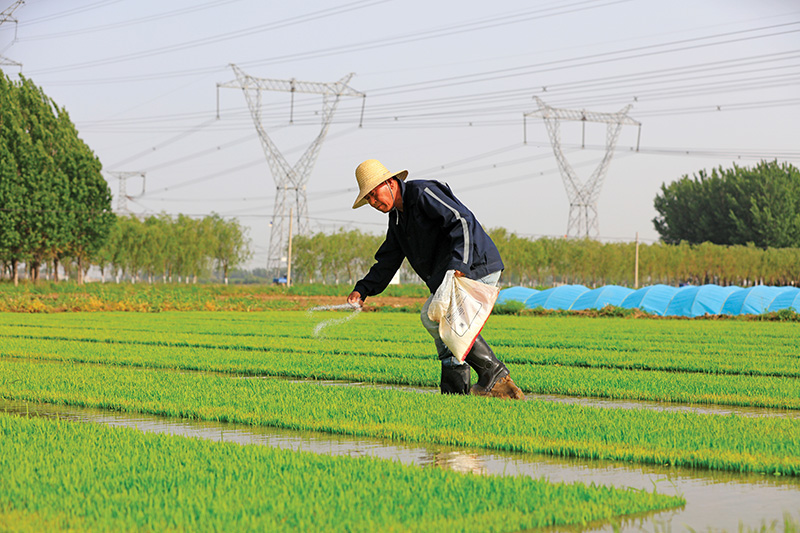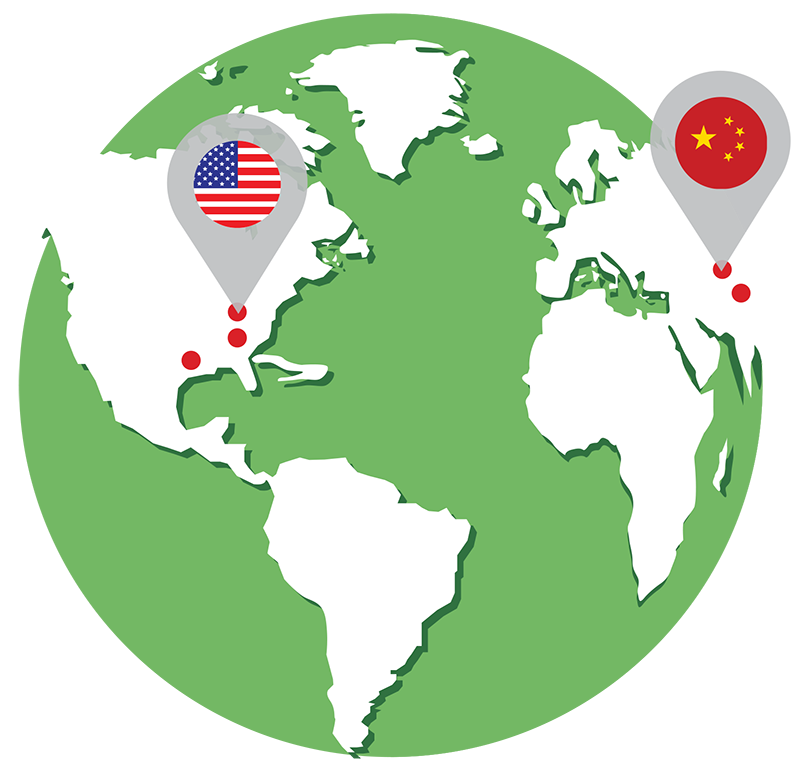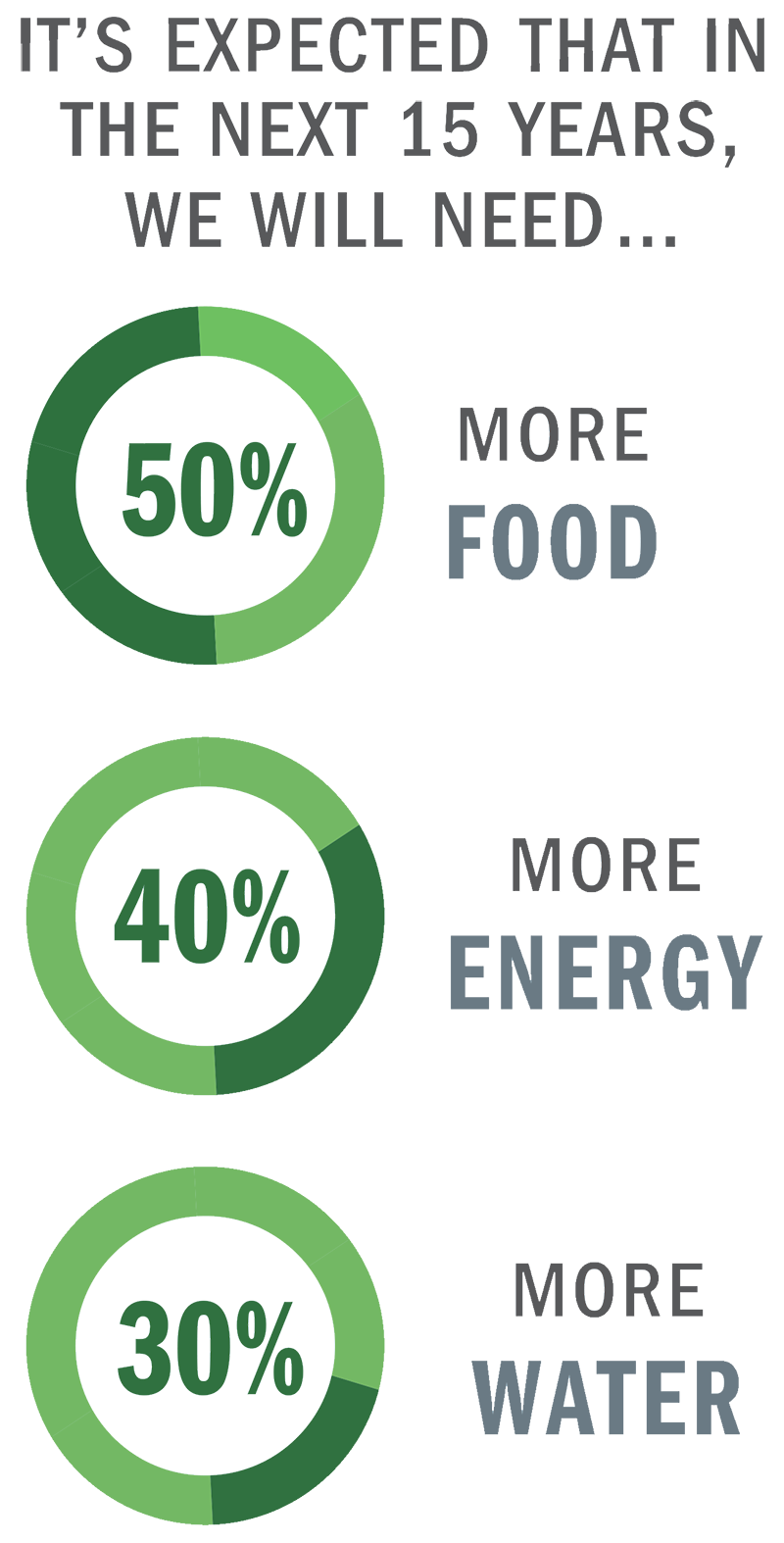Suppose you’re a farmer cultivating crops in a major river basin. You rely on water from the river to irrigate your fields. But you’re not the only one who depends on what is literally a liquid asset flowing through your landscape. The local utility company uses the river to provide electricity through hydropower. The county taps the river for municipal water. A variety of stakeholders draw from this common resource but have different needs at different times—and the actions of each affect the amount of water available for the others.
How should people managing dams and reservoirs store and release water to make sure farmers have enough for their crops while ensuring adequate supplies for power and household use? What technologies are necessary to provide everyone the water they need when environmental or other circumstances create supply challenges?
Answering such questions is not strictly a matter of balancing competing interests. “The goal is to maintain food, water and energy security all at the same time,” says Y.C. “Ethan” Yang, assistant professor of civil and environmental engineering and team leader for Lehigh’s Complex Adaptive Water Systems research group.
Food, energy and water (FEW) form a nexus in which all three are interconnected in a complex system of systems that includes natural processes like runoff and snowmelt along with human behavior and policies. Farmers aren’t necessarily competing with their utility because they need energy, too—even to pump water.
“We don’t want to solve a security issue in one sector that causes a security issue in another,” Yang says.
 Two continents, two rivers, a single model
Two continents, two rivers, a single model
Creating quantitative and computational modeling of complex FEW systems is the focus of a four-year, $500,000 grant that Yang and an international team of colleagues from several institutions across the United States and China have been awarded by the National Science Foundation.
With Yang as principal investigator, the NSF-backed “US-China: Quantifying Complex Adaptive FEW Systems” project will use data and analysis from two major river basins to develop a single basin-scale modeling framework that could apply to either body of water. The goal is to decipher the food-energy-water nexus and to evaluate the vulnerability, resilience and sustainability of these “system of systems,” especially in light of changes in both human and natural domains.
The U.S. team will focus on the Columbia River basin bordering the Pacific Northwest, while the Chinese team will focus on the Mekong River basin that traverses much of Southeast Asia.
“Both basins rely heavily on hydropower for regional electricity supply,” Yang says. “But the Columbia is mature—neither the U.S. nor Canada are likely to build new, major dams for it—while along the Mekong, more than 30 dams are under construction or consideration. The basins’ similarities will give the model strength while the differences will lend flexibility.”
Powerful, versatile modeling frameworks will become increasingly important as pressures on food, water and energy increase.
“It’s expected that in the next 15 years, we will need 50 percent more food, 40 percent more energy and 30 percent more water to satisfy global demand,” says Ekundayo Shittu, assistant professor at George Washington University’s School of Engineering and Applied Science in Washington, D.C., who is working on the project’s energy module. “If we stay at current production levels, we will fall short of those requirements. Projects like ours are integral to helping society avoid such a precarious position.”
Modeling frameworks attempting to address the FEW nexus in the past, however, have tended to emphasize certain sectors while giving short shrift to others.
“We don’t yet have a golden solution that links all three FEW sectors,” Yang says.
One difficulty pertains to time. Water-use stakeholders tend to make key decisions at different temporal scales based on their needs and priorities. A farmer may calculate how much water is needed for a growing season annually. A municipality may determine population needs monthly. A utility may evaluate its requirements on an hour-to-hour or even minute-to-minute basis. “To put all that in a one-model framework is a challenge,” Yang says.
A second challenge is spatial. When looking at a river basin, how much detail is needed? Are you looking at a single farm or reservoir? A municipality? A county? The entire basin?
“Our methodology is flexible enough to overcome challenges at both the temporal and spatial scales,” Yang says.
Yang and colleagues’ NSF proposal calls for using agent-based modeling, a computational approach that simulates the behavior and interactions of autonomous entities, which could be individual in nature (such as a specific farmer or reservoir manager) or collective (such as a township or county). Flexibility in how an agent is defined helps the methodology model the impact of specific decisions or changes in conditions at different spatial and temporal scales.
“We probably won’t go to the level of the individual farmer, but our hope is that we could, for example, provide a reservoir with a suggested water use scheme throughout the year,” Yang says. “It could let reservoir managers know the most desirable water release at a level as fine as hourly, so downstream farmers would have enough for irrigation while the dam would retain enough hydropower-generating capacity for energy purposes.”
The model would be able to factor in variable conditions such as the amount of snowmelt in mountains feeding the river.
“Determining what’s most suitable for all FEW sectors will benefit all stakeholders in the entire basin,” Yang says.
Investigators aren’t yet sure how computational challenges will be resolved.
“The nature of the proposal is first to ask questions and later propose technical answers,” says Hongyi Li, assistant professor at the University of Houston, who concentrates on the water module.
One initial step is to learn more about how existing modeling tools run and can be improved by assessing their inputs, outputs and technology platforms. Another early task will be to meet with Columbia basin stakeholders and learn more about their concerns, priorities and vision.
“What they tell us will help quantify our agent-based model,” Li says. “Later testing and feedback will help refine it.”
Yang will have a Ph.D. student dedicated full-time to the project, as will Shittu and Li. Yang also plans to enlist a postdoctoral researcher, and hopes to draw in undergraduate students through Lehigh’s innovative Mountaintop Initiative.
The project is collaborative on multiple levels, engaging researchers from Lehigh’s Institute for Cyber Physical Infrastructure and Energy and its Institute for Data, Intelligent Systems and Computation. But the collaboration also extends to world-class universities worldwide.
“Lehigh’s reputation helped establish connections and collaboration with our partners in China, who are really happy to have Lehigh on board,” Li says.
The Chinese contingency is led by Dr. Pan Liu, Wuhan University in Wuhan, Hubei, and Dr. Jianshi Zhao of Tsinghua University in Beijing. The team members in China will provide data on Mekong basin food, energy and water usage, based on a previous collaboration between Zhao and Yang, and will coordinate with US-based colleagues for agent-based model development. Liu will apply a system dynamics approach to the Mekong as a methodology comparison, to see if different modeling tools provide different results.
Shittu notes another significant aspect to the project: “It’s being led by junior faculty,” he says. “Major projects like these are often led by senior or tenured faculty. It is notable that Lehigh provides opportunities for junior people to flourish and do big things.”


